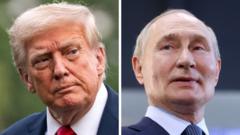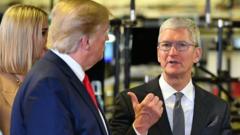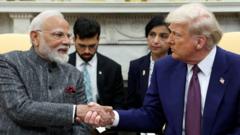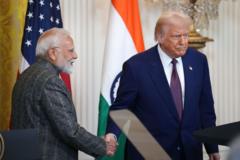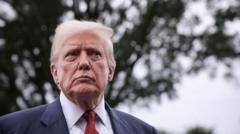In a bid to bolster U.S. manufacturing and jobs, Trump imposes steep tariffs while stirring controversy over global trade relations.
Trump's New Tariffs Impact Global Trade Landscape
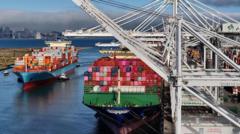
Trump's New Tariffs Impact Global Trade Landscape
President Donald Trump's new tariffs on over 90 countries come into effect, reshaping international trade dynamics.
U.S. President Donald Trump’s sweeping new tariffs targeting over 90 countries have officially taken effect, signaling a significant shift in global trade dynamics. The tariffs come at the end of a deadline Trump imposed for countries to negotiate new trade deals with the U.S. Just before this deadline, Trump boasted on his Truth Social platform about the influx of billions of dollars into the U.S. as a result of the new customs duties.
These tariffs are part of Trump’s strategy to bring jobs and manufacturing back to America, and to reshape what he perceives as an unfair global trading system. Among the latest developments, Trump also threatened to increase tariffs on imports from India to 50% unless the country halts its purchases of Russian oil, further intensifying geopolitical tensions. Additionally, Trump hinted at a potential 100% tariff on foreign-made computer chips to incentivize tech companies to invest domestically.
Accompanying these tariffs, the overall average U.S. tariff rate has reached its highest level in nearly a century due to myriad industry-specific taxes, especially on sectors like vehicles and steel. The latest round of tariffs, first announced in April, was delayed for several months to accommodate other nations seeking new trade agreements.
Markets in Asia seemed to absorb the news without significant upheaval, with indices in Japan, Hong Kong, South Korea, and mainland China showing slight increases after the announcement. Economists suggest that the new tariffs could eventually bring stability after a period of uncertainty.
Countries that depend heavily on exports have felt the brunt of these tariffs, particularly in Southeast Asia, with nations like Laos and Myanmar facing increases as high as 40%. While major economies such as the UK, Japan, and South Korea have negotiated lower tariffs, others like Switzerland face punitive rates that could hinder their economic stability.
In related developments, Trump escalated tariffs on Canada from 25% to 35%, claiming insufficient cooperation in addressing drug trafficking across the U.S. border. Canadian officials have countered that they are indeed taking action against drug-related activities. Meanwhile, the U.S. is continuing trade discussions with Mexico while maintaining higher tariffs for now.
Trump has also linked some of his recent tariff policies to international responses regarding Russia’s war in Ukraine, including the threat of imposing "secondary tariffs" on countries that maintain economic ties with Russia. Notably, with India facing increased tariffs for purchasing Russian energy, the move raises questions about whether it will become a template for future actions against other nations.
Amid all this, tech giant Apple committed to a $100 billion investment in the U.S., influenced by pressures from the Trump administration. Some of the largest semiconductor manufacturers, however, may avoid the new tariffs due to their significant U.S. investments.
As the tariffs unfold, the long-term impacts on the economy and international relations remain to be seen, with many experts urging a careful analysis of the aftermath of these critical policy changes.



